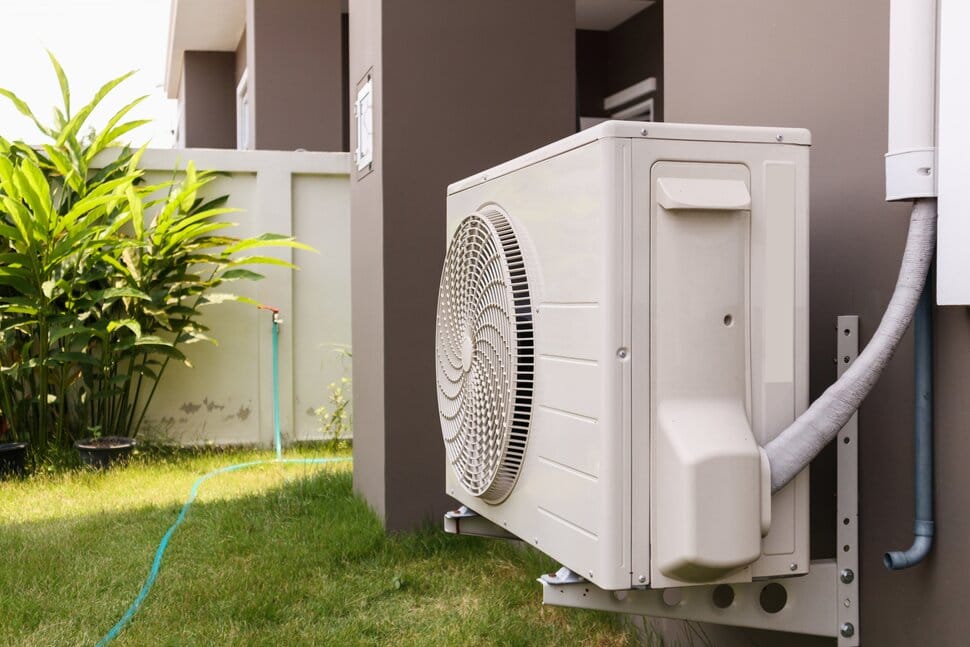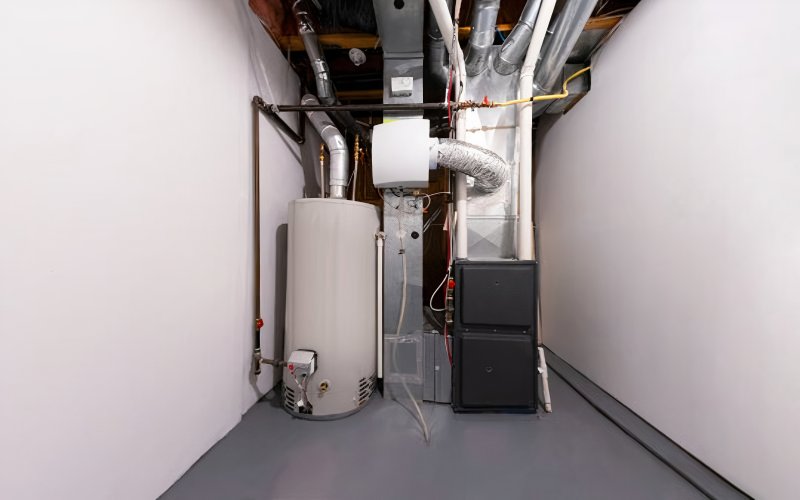Why Is My Furnace Leaking Water? Top Causes & Fixes [2024 Guide]

Our Recent Posts
New HVAC System Cost in Sacramento For 2025 – Southport
Airing Out Your Home: How Often Is Best in 2025?
Table of Contents
Furnace leaking water can be a perplexing issue, especially when you expect them to deliver warmth rather than puddles of water. Many homeowners worry about why water is coming from their furnaces and what it indicates for the health of their heating system. Of course, many homeowners wonder why water is present in the furnace and whether it is safe for their heating system. Now that we’ve covered how furnace leaks work, let’s look at the underlying causes, how to troubleshoot, and how Southport Heating and Air can help you move ahead in a malfunctioning furnace.
If you have a leaking furnace, please do not hesitate to contact our skilled staff at (916) 606-3076.
High-Efficiency Furnaces and Condensation
However, if you have a high-efficiency furnace, water leakage can be designed into it. These furnaces, with an AFUE of more than 90%, use additional heat exchange to absorb even more heat, and as you can expect, this technique causes condensation. This moisture is drained away using a specifically designed drain pipe known as the drain line. System 120 includes a drain tube through which condensation is discharged. However, if that pipe becomes blocked or fractured, the water rises and eventually leaks around the furnace. Southport Heating and Air can inspect the drain line, make necessary changes, and, most importantly, ensure that your high-efficiency furnaces operate properly.
Standard Efficiency Furnaces with Humidifiers
If you have a standard-efficiency furnace with a humidifier, you may only notice water leaking when there is an issue with the humidifier. This can happen when the humidifier line fails or there is an issue with the water panel. If your humidifier is damaged, it can leak, easily mistaken for a furnace problem. This makes it advisable to have Southport Heating and Air inspect your humidifier system if you notice leaks, as they can be quickly repaired or the afflicted parts replaced to prevent further damage.
Issues with Drainage System or Clogged Filter
Leaky furnaces can also be caused by a clogged drainage system. It is popular in units that also manage air conditioning because the furnace and AC use a single-line drain. If the line becomes clogged or damaged, water that was supposed to drain away begins to accumulate near your furnace. Another issue could be a filthy air filter, which limits air supply and causes a furnace to overheat, resulting in additional condensation. The specialists at Southport Heating and Air can establish whether the problem is with the drain line or the filter, and they can clean up or repair any issues to keep your furnace functioning smoothly. You can contact us at (916) 606-3076 if your system shows any of these signs.

Faulty Heat Exchanger
A water leak could be caused by a damaged heat exchanger, though this happens less frequently. This is a more serious problem that reduces heating efficiency and, more importantly, poses a risk of gas leaking into your home. If your furnace is more than 10 years old, or if its efficiency has dropped significantly, combined with difficulties such as water damage, consult a specialist. At Southport Heating and Air, you may arrange a diagnostic test for your heat exchanger, and the professional will advise you on whether it needs to be repaired or replaced.
Broken Condensate Pump
A condensate pump aids in ‘priming’ the force required to evacuate condensation produced by high-efficiency furnaces. When the pump fails or is missing, it might cause water to seep from your furnace. This is extremely common in basements and other areas where the furnace is positioned beneath the main drainage system. As a reputable HVAC company in Southport, we can examine and repair or replace your condensate pump to prevent further leaks.
Troubleshooting Furnace Water Leaking
Now that you know some of the potential sources of a furnace leak, you can take a few steps to troubleshoot the problem.
Identify the Type of Furnace.
Knowing whether you have a high-efficiency or standard furnace reduces the likelihood of experiencing a water leak. Here are a few tips:
Examine the Exhaust Pipe: These differ in terms of the type of exhaust pipe used for a high efficiency furnace, which is PVC, whereas a traditional furnace uses metal.
Check the efficiency rating. Conventional furnaces have AFUE of around 80%, and high-efficiency furnaces have ASUE of more than 90%.
Home Age: People are currently adopting new, high-efficiency homes, while older homes still use conventional furnaces.
Inspect Common Leak Sources
Once you’ve discovered the type of furnace in your home, inspect the locations where you’re likely to find leaks. Inspect the condensate drain hose, drain line, and pump for blockages or cracks on high-efficiency models. For traditional versions, pay attention to the groupings of HVAC components such as the AC’s condensate pump, drain line, and evaporator coil. Southport Heating and Air’s specialists can evaluate and repair some of these areas. For an appointment or more information, call (916) 606-3076.
Run the Air Conditioner
A simple test is to turn on the AC briefly and then check to see if water has accumulated around the furnace. If there is an excessive water leak, the problem may be with the air conditioning system rather than the furnace. We can also diagnose and repair issues with your furnace and air conditioner, as well as ensure that your complete HVAC system is properly sealed.
Why Call Southport Heating and Air?
Contractors must identify and repair any leaks that may exist in the furnace or heating systems. Southport Heating and Air professionals understand that leaks can be caused by condensation, clogged pipes, or internal issues, all of which our skilled technicians are prepared to address. That is why the safety and comfort of your home is our primary priority, whether we are maintaining your furnace or providing professional advice on how to run it at peak efficiency. If you have any leaking issues or see anything else that suggests the furnace needs to be serviced, please contact us at (916) 606-3076. So, we’re here to keep your home warm and comfortable while preventing water leaks.
FAQs
Nonetheless, probable leaks may occur in our furnace while the air conditioner is not in use, due to the high-efficiency furnace's condensate drain, clogged drain line, or a malfunctioning humidifier that is occasionally attached to the system. This is easily diagnosed by an expert, such as the Southport Heating and Air team, who will thoroughly inspect the heating system.
While a water leak itself isn’t usually dangerous, it can indicate underlying issues. Water buildup around electrical components can create a risk of short-circuiting and damage your system. Over time, unresolved leaks can lead to corrosion, mold, or even structural damage in your home.
Basic steps like checking for clogged drain lines or ensuring that hoses are securely attached can be performed by homeowners. However, if these don’t resolve the issue, it’s best to call a professional HVAC technician from Southport Heating and Air at (916) 606-3076 to prevent further damage.
High-efficiency furnaces generally have a PVC pipe for exhaust and an AFUE rating of 90% or above, while conventional furnaces use metal exhaust pipes and have an AFUE around 80%. Knowing your furnace type can help narrow down leak causes.
The most common causes of furnace leaks include a clogged condensate drain line, issues with the condensate pump, problems in the air conditioning system (if combined with the furnace), or a faulty humidifier. Identifying the exact cause typically requires inspecting each of these components.
Regular maintenance, such as clearing drain lines, inspecting hoses, and ensuring your system is free of clogs, can help prevent leaks. Southport Heating and Air offers maintenance services that include these checks to keep your furnace running efficiently.

